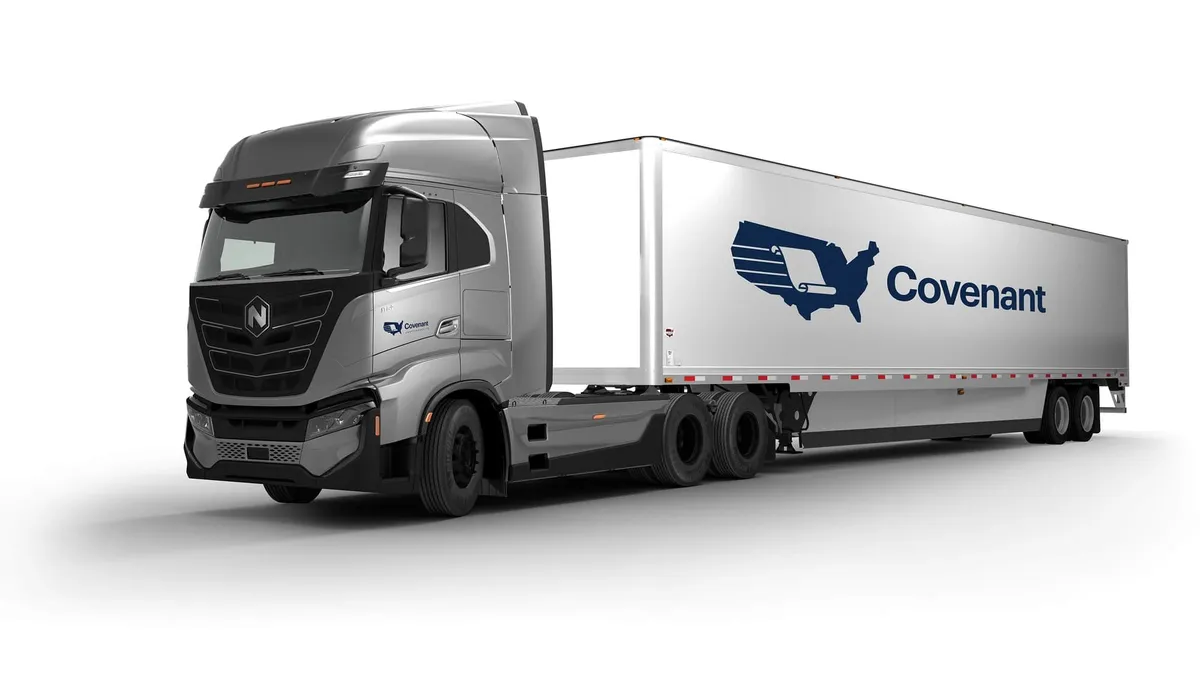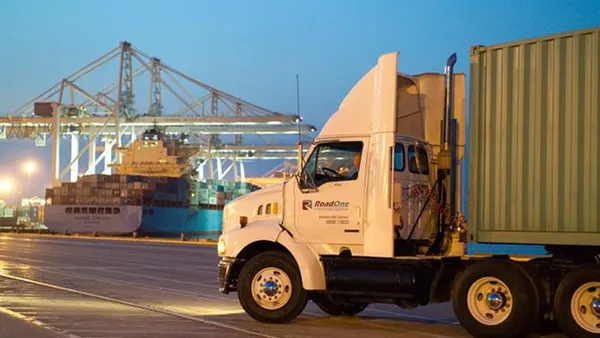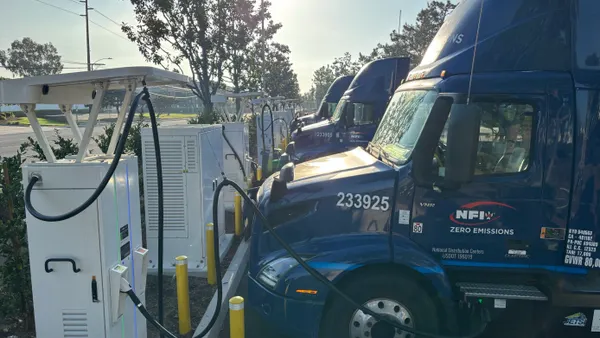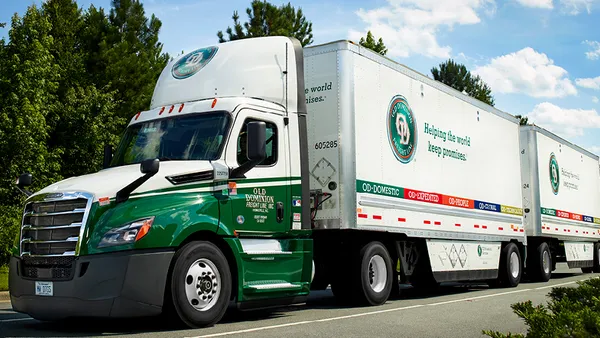Dive Brief:
- Covenant Logistics Group’s operations and maintenance costs rose by $7.5 million YoY in Q3 2022, as the company struggles with an aging fleet, according to a securities filing.
- The 50% increase in costs came amid challenges with replacing equipment and inflationary effects on tires, parts and maintenance.
- Executives are making efforts to lower the average age of Covenant’s fleet and expect changes to begin in Q4 and throughout 2023, according to a news release.
Dive Insight:
Covenant attributes a large part of its higher operations and maintenance costs to aging and downed equipment.
“Fleets that require 15 trucks are now requiring 20 trucks because five of those trucks are in maintenance or long-term down status, so it’s creating really just a strong headwind across all of the fleets,” Chief Financial Officer Tripp Grant said on an earnings call Oct. 21.
To help resolve those issues, Grant said the company expects to replace 800 trucks this year and 900 trucks next year, noting Covenant had a previous goal of 525 to 550. In May, Covenant projected it would get an additional 529 new replacement tractors.
Those additions should help reduce its average tractor age starting in the fourth quarter. The company’s average tractor age was 2.4 years in Q2 and Q3, up from 2.3 years as of March 31 and 2.1 years when it reported it in February.
OEM supply issues have constrained new orders, delaying replacement schedules. Pent-up demand skyrocketed to a record of 56,500 units in September, and analysts have offered different outlooks for whether OEMs could fulfill orders in 2023.
But not everyone is citing the cost concerns in the way that Covenant has: P.A.M. Transportation Services noted last month for its Q3 earnings that it's keeping equipment longer, but the carrier said it's not incurring "significant additional maintenance costs because of the delays."
Covenant Senior Executive Vice President and Chief Operating Officer Paul Bunn, who will become the company’s president on Jan. 1, suggested Q3 was a peak in terms of equipment and maintenance costs, and the company expects its average tractor age to come down in Q4 and throughout 2023.
“Sequential operations and maintenance costs were significant in the quarter,” Bunn said on the earnings call, “but we feel third quarter was our peak from a cost perspective on equipment and maintenance costs due to an aggressive replacement plan between now and the end of 2023.”












